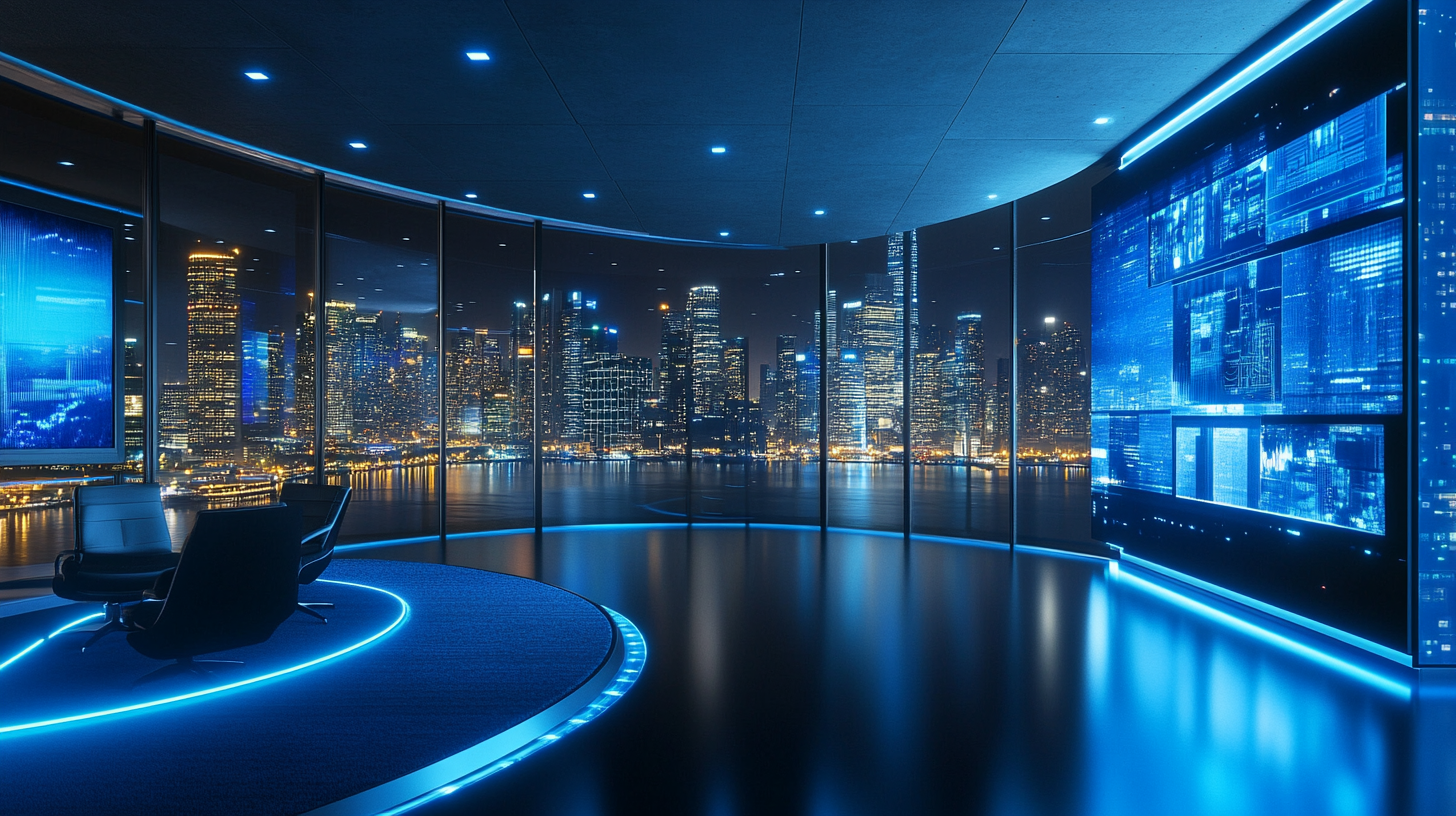Essential Insights for Global Buyers on LED Lighting Solutions
In today's rapidly evolving marketplace, global buyers face the challenge of navigating a myriad of options when it comes to LED lighting solutions. As a preferred choice for both energy efficiency and longevity, LED lighting has transformed the way businesses illuminate their spaces, offering sustainable alternatives that are not only cost-effective but also environmentally friendly. Understanding the diverse applications, benefits, and technological advancements in LED lighting is essential for buyers aiming to make informed purchasing decisions that meet their specific needs.
As the demand for innovative lighting solutions continues to grow, it is crucial for global buyers to stay ahead of industry trends and developments. From commercial establishments to residential projects, the versatility of LED lighting plays a pivotal role in enhancing aesthetics and functionality. This blog aims to provide essential insights that will empower buyers to leverage LED lighting to its fullest potential, ensuring they select the right products that align with their objectives while optimizing energy consumption and overall performance.

Understanding the Global LED Lighting Market Landscape
The global LED lighting market has exhibited remarkable growth, driven by increasing energy efficiency demands and a shift towards sustainable practices. According to a report by Research and Markets, the LED lighting market was valued at approximately $100 billion in 2022 and is projected to reach over $150 billion by 2028, growing at a CAGR of about 8%. This growth is fueled by advancements in technology, including smart lighting solutions that integrate IoT capabilities, enhancing both functionality and energy savings. In regions such as North America and Europe, stringent regulations on energy consumption and carbon emissions have accelerated the adoption of LED lighting. The U.S. Department of Energy forecasts that by 2025, LEDs will account for 75% of all lighting sales in the country, a significant leap from less than 20% in 2015. Similarly, the European Union’s commitment to reducing greenhouse gas emissions has further promoted LED adoption, as these solutions offer up to 80% energy savings compared to traditional incandescent bulbs. Emerging markets in Asia-Pacific are also contributing significantly to the growth of the global LED lighting industry. The region is anticipated to exhibit the highest growth rate, driven by increasing urbanization and infrastructure development. The International Energy Agency highlights that by 2025, the Asia-Pacific region will represent more than 50% of the global LED market share, making it a critical area for global buyers to focus their investments. Understanding these dynamics is crucial for buyers looking to navigate the evolving landscape of LED lighting solutions effectively.

Key Factors Influencing LED Lighting Purchases Worldwide
The global LED lighting market is undergoing significant transformations influenced by various key factors that buyers must consider when making purchasing decisions. One of the primary drivers is the increasing demand for energy-efficient lighting solutions, as more regions phase out incandescent lamps in favor of advanced alternatives. This shift not only enhances energy efficiency but also reduces overall operational costs for businesses.
Another influential factor is the projected secondary replacement demand, expected to reach 5.8 billion units of LED lamps and luminaires in 2024, reflecting a crucial turning point in the industry. Buyers should closely follow these replacement trends, as they indicate a robust market opportunity and imply ongoing innovation within the LED sector. Brands and manufacturers are gearing up to meet this demand, presenting buyers with a wider variety of products that incorporate the latest technological advancements such as smart lighting controls, integrated sensors, and wireless connectivity.
Moreover, understanding the growth forecasts for commercial and outdoor lighting segments reveals emerging trends that can guide purchasing strategies. With a compound annual growth rate (CAGR) of 5.98% anticipated for the commercial lighting market from 2023 to 2029 and an expected CAGR of 3.6% for the street lighting sector, buyers can expect a competitive landscape that emphasizes sustainability and smart technology. Thus, aligning purchase decisions with these market dynamics will not only ensure compliance with global standards but also enhance the efficiency and functionality of lighting installations across various applications.

Evaluating Quality and Performance Metrics in LED Solutions
When it comes to selecting LED lighting solutions, global buyers must prioritize quality and performance metrics to ensure their investments yield the best results. The proliferation of LED products in the market can make it challenging to distinguish between high-quality options and subpar alternatives. Therefore, understanding the key performance indicators, such as luminous efficacy, color rendering index (CRI), and lifespan, becomes essential in evaluating the true value of LED lighting solutions.
Luminous efficacy, measured in lumens per watt, directly affects energy efficiency. Buyers should aim for LED products with higher efficacy ratings, as this indicates better light output for less energy consumption. Additionally, the color rendering index plays a crucial role in determining how accurately colors are depicted under artificial light. A CRI score above 80 is generally acceptable, but applications requiring precise color differentiation may necessitate even higher ratings. Thus, assessing CRI not only contributes to better visual quality but also enhances the overall experience in various settings, from retail spaces to art galleries.
Equally important is the lifespan of LED lighting solutions. While many products tout long operational lifetimes, buyers must look for independent testing and reliable warranties that back these claims. A well-documented lifespan not only improves the cost-effectiveness of an LED solution but also minimizes maintenance and replacement efforts. By focusing on these quality and performance metrics, global buyers can make informed decisions that lead to sustainable and efficient lighting choices, ultimately supporting their broader project goals.

Sustainability Trends and Their Impact on LED Lighting Choices
As global buyers increasingly prioritize sustainability in their purchasing decisions, LED lighting solutions have emerged as a key area of focus. The intersection of innovative lighting technology and sustainable practices offers significant advantages for consumers and businesses alike. Trends indicate that buyers are looking for energy-efficient options that not only reduce electricity consumption but also contribute to lowering carbon footprints. As environmental awareness rises, the demand for lighting products that meet stringent sustainability criteria is expected to shape future manufacturing and design processes.
Recent insights reveal that the impact of industries, including fashion, on the environment has raised the bar for consumer expectations. Buyers are now more informed about the pollution associated with traditional lighting methods and are actively seeking alternatives that promote sustainability. This shift is reflected in the growing market for LED lighting, which emphasizes energy efficiency and sustainable materials. Advanced LED lighting solutions are facilitating sustainable practices in various sectors, including agriculture, where controlled environments benefit from horticulture-specific technologies that enhance crop yields while minimizing ecological impacts.
Additionally, as more consumers express preferences for sustainable products, companies are compelled to adapt to these demands by investing in sustainable innovations. This evolution in consumer behavior is not only reshaping retail strategies but also driving a broader transformation across industries. By aligning with sustainability trends, LED lighting becomes an essential component of responsible consumerism, enabling buyers to make choices that reflect their values and contribute positively to environmental goals.
Strategies for Cost-effective LED Procurement for Buyers
When considering the procurement of LED lighting solutions, global buyers must adopt strategies that not only emphasize cost-effectiveness but also long-term value. According to a report by the International Energy Agency (IEA), the global LED market has witnessed substantial growth, with an expected compound annual growth rate (CAGR) of approximately 13% from 2021 to 2026. This upward trend reflects the increasing demand for energy-efficient solutions, making it essential for buyers to navigate the market wisely.
One effective strategy for cost-efficient procurement is leveraging bulk purchasing. By consolidating orders, buyers can negotiate better pricing strategies, capitalize on volume discounts, and significantly reduce unit costs. A study by the Lighting Research Center indicates that bulk procurement can lead to savings of up to 30% compared to purchasing smaller quantities. Additionally, buyers should explore local suppliers or manufacturers to minimize shipping and handling costs, contributing to lower overall expenses while supporting regional economies.
Moreover, staying informed about the latest technological advancements can also lead to enhanced procurement strategies. Recent innovations in LED technology, such as smart lighting and enhanced durability, can provide buyers with improved product lifespans and lower maintenance costs. According to a recent report by the U.S. Department of Energy, LED lighting has the potential to save over 75% in energy consumption compared to traditional incandescent lighting. Buyers who understand these advancements can make informed decisions that not only reduce upfront costs but also lead to significant savings in energy and maintenance in the long run.






